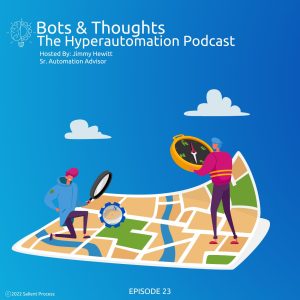
This week we have a very special guest, Salient’s very own Project Manager, Valeria Romero Vargas. Valeria is the Project Manager for our one-of-a-kind solution, Automation Compass. During this episode, Valeria and Host Jimmy A. Hewitt will walk you through how Automation Compass works, the methodology behind the solution, and more.
Last but not least.. Drumroll, please… We’re thrilled to announce that we’re hosting a giveaway on our podcast! That’s right. You heard it here first!
Tune in to this week’s episode and we will announce the winner next month on April 14th, 2023!
View the full Automation Compass Methodology
Follow along with the episode now!
 Background
BackgroundProcess Improvement based knowledge and interests
Project Management Experience
Industrial Engineer from University of Antioquia in Colombia
Business Analyst from UCLA, California
Currently Enrolled in the Innovation and Entrepreneur Program at Harvard University online
Started as an Analyst for Automation Compass
Her job was to map the documentation and understand the requirements that need to go with the tool
Used her project management background to approach her tasks from a project management perspective
Progressively she gained more knowledge about the tool, the process, the customer base, and eventually landed the position of a Project Manager
Currently the Project Manager for Automation Compass
All of them equally. It’s a little bit of everything.
“Automation Compass is a framework, not just a tool and not just a solution.. It’s a framework that when you apply all these elements together, it helps to speed up the process of process improvement to make it easier, smoother, faster, and that’s Automation Compass.” – Valeria Vargas
After conducting many interviews with customers and taking the experience from the analyst team who has worked with many clients in process mapping and identifying process improvement initiatives, we have identified the different entry points / steps of where the client is at in their process improvement journey.
There is nothing right or wrong with being at either of these entry points, it is about determining where you are and how your company takes this into consideration for the daily practice in the operational experience
We could be working with an operational experience team that has the idea of “I want to improve the processes for my company” and that’s their entry point, so they are looking for the ideas in the processes and then linking this back to the strategy.
The company’s strategy actually triggers the initiative for improvement, so this requires us to find and implement improvements in these areas, so that’s starting from the top.
The third idea is more like starting from the community. You have a powerful community of knowledge of your processes that is in the company, those that are every day working in the different areas has tons of ideas on how to improve, process and capturing those ideas, analyzing and placing them and then connecting them with the rest of the strategic and initiatives, that’s our third entry point.
Once we identify that, and then either if you start from a bottom to top approach or a top to bottom approach- it usually involves the same steps that are
We were trying to cover all those different things inside the application when we realized that not everyone needs everything at the same time because of whatever your is practice at that time. That’s why we decided to break down the tool into three different models.
Level 3
Level 2
Level 1
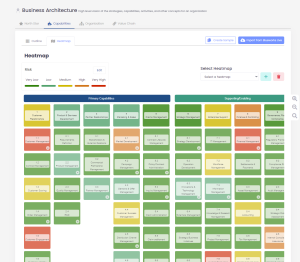
You have opportunities or ideas for process improvement
The intention is to this model is to analyze where is the impact of this opportunity in a financial impact
Depending on what the metrics are for your company, analyze your automation opportunities in terms of those metrics. It’s important to also keep in mind the soft benefits such as
There could be many benefits that an opportunity has for your company that isnt a financial benefit but still needs to be measured and tracked.
Once it is deployed and then you close the life cycle. The intent of the transformation model is to help to track the lifecycle of an opportunity.
Now you may ask what’s the difference then between this model and our project management? It is complementary, but we are not trying to replace a project management tool in this particular model because this is not a project management tool.
We are not creating tasks,user stories, tickets, etc.
We do want to track is capturing the ideas in a central place, how to analyze all of them and prioritize them so you can choose what your next process improvement project is to assign the proper resources.
That’s the prioritization and the financial factor aligning this with the strategy. It’s something that is completely different from a project management tool.
The intention of this model is to see the “what-ifs” of the process changes and see the outcome that you will get. If you are looking to find “What-Ifs’ then we have
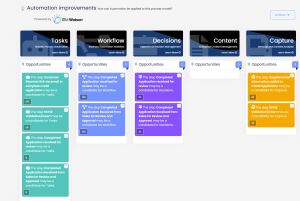
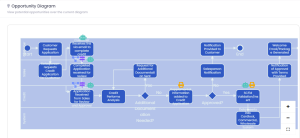
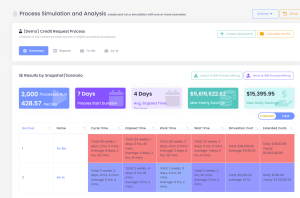
Theses three modules can work independently but when they work together we can achieve some very powerful results to accelerate the process improvement journey
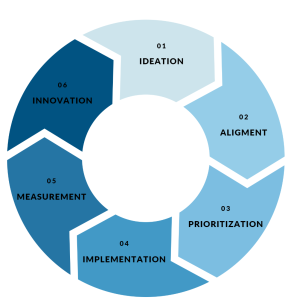
The intention of this methodology, “The Process Improvement flywheel”, is to get started on the first push and every time you go through the phases of the wheel, it’s going to get faster and easier every time.
Now, where do you start? What is that first “push”?
Where are those ideas? What are those pain points? We can ensure there are so many people that are willing to talk and willing to give you the idea for process improvement. Either it is the managers, or the production floor if you go out there and talk with people, they are going to tell you what improvements can be done. This now leaves you with new ideas.
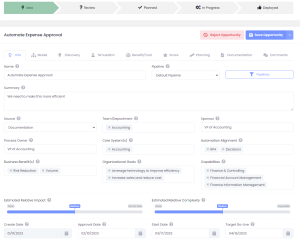
Level one of Business Architecture: Connect to your goals. You may have overall goals or goals for a specific department- Even if you don’t have those strategic goals that are company wide, you can still capture goals for whatever you are focusing your efforts on.
Now, if you have many departments that you are working with, that means you also need to prioritize which department you are going to focus on and this is also part of this strategic alignment step. How to prioritize the department based on the data you have available.
Do you have a customer journey map? Okay, let’s find the ideas for those specific areas that are for these specific goals or the company wide goals.
Now you know that the ideas that you collect are aligning with those particular areas that are more painful, but also those areas that will give you more impact to your goals.
This is the step of connecting with the strategy. It means we are going to focus on ideas that will provide a high gain and will solve a lot of pain.
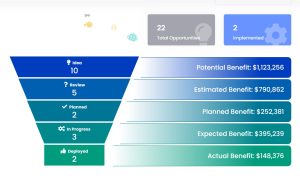
You have 10 ideas that are in this particular department or this particular area of our customer journey and how do I know which one should go next?
Prioritizing the ideas is a really important step, because it really depends on what is the strategy of the company. So if your company is already in a really mature position for process improvements initiatives, you may go with an initiative that requires a lot of effort, but also delivers a lot of value, or for those that we are just starting to give this first push, the recommendation is find quick wins, that lower hanging fruit that is just ready to be picked.

The intention here is to take action on those process mapping efforts and take the next step; improve it and implement.
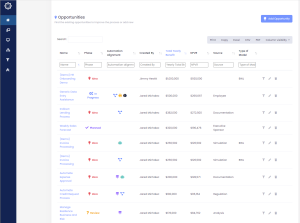
If you have a topic idea, contact us today. We want our podcast to answer your questions, and if you have something that you want to hear, we would love to know. In addition, you can ask questions and get in touch with our Salient Process team.
At Salient Process, we understand the importance of comprehensive digital transformation. We work closely with each client and use a North Star methodology to align your procedures with overall business goals. Our expert team works hard to understand your unique needs, making a customized plan for success. With our Digital Business Automation solutions, you can move closer to your digital transformation goals.
Digital Business Automation Home Page
What is Digital Business Automation?
Scaling Beyond RPA to Digital Business Automation